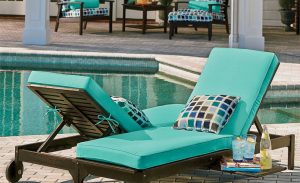The Perfect Patio Cushion Material
March 14, 2016 by admin
Filed under Travel History
Comments Off on The Perfect Patio Cushion Material
 Written by: The Foam Factory
Written by: The Foam Factory
Outdoor furniture often becomes water damaged when improper cushioning material is used. With the right cushion for your outdoor furniture or boat furniture you can save time and money by using this ideal cushioning material made out of foam. This foam is designed to stand up to water. The most important part is that it dries quickly.
If your outdoor patio furniture has signs of water damage, consider a foam replacement. You might just have the wrong kind of foam on your furniture. Foam that is specifically designed for outdoor use is the ideal choice.
There are other uses of outdoor foam besides the patio. Boats that use covered outdoor foam for their seats show far less signs of water damage over time. Boat mattress replacement for seating areas should be considered when a boat shows even the slightest bit of water damage.
A patio cushion using outdoor foam can be cut to any width or thickness and comes in a variety of compositions to suit individual climate zone needs. The main reason why these outdoor foam pads are so effective at preventing water damage is their highly efficient means of drainage and evaporation. These foam pads just dry quickly.
When your boat or your patio cushion material starts to grow mold, it is time for a foam replacement. Knowing about the outstanding drainage and evaporation qualities of this particular type of foam material can save you costly replacements of outdoor foam pads.
British Colonialism in Sydney
January 22, 2015 by admin
Filed under Travel History
Comments Off on British Colonialism in Sydney
By Phin Upham
You may have heard that Australia was once a drop-off point for British convicts. There is definitely truth to this description, but it had to do with the Declaration of Independence. England used to send its convicts to America, but the July 4th Declaration ended that and left England with a surplus of criminals.
So Britain looked at territory that was claimed in the name of England by James Cook, and founded a penal colony on what would become Sydney. The first fleet consisted of 11 ships and transported 850 convicts, but the location chosen was deemed unsuitable because the soil lacked nutrients and fresh water was scarce.
Eventually, Sydney was founded in February of 1788 named after Thomas Townshend, Lord Sydney.
43,000 convicts would come to call Sydney home within just 4 years of the founding, and the colony seemed to be a barebones facility. Maps from the time don’t show structures onsite, and convicts were basically expected to fend for themselves once they arrived on the island.
Supplies quickly ran low, and residents (including officers of the Crown) began to suffer from starvation and outbreaks of smallpox. In 1810, things began to take a turn for the better. When Lachlan Macquarie became governor in 1810, he brought Christianity and education to the colony under Macquarie’s watch, Sydney began trading wool and quelled the Rum Rebellion of 1808. Sydney continued to come out of isolation, and by 1822 the town was basically modernized with banks and markets. Sydney even had working roads and other infrastructure. A true marvel in innovation, but a cruel form of capital punishment.
Phin Upham is an investor from NYC and SF. You may contact Phin on his Phin Upham website or Twitter page.
